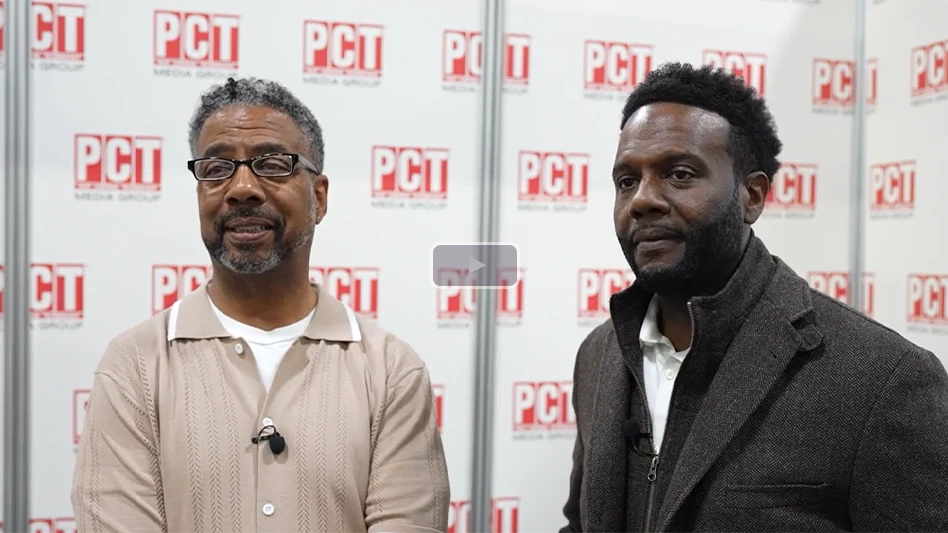A University of Kentucky study reveals that pest management professionals may put themselves in jeopardy if they check the "inactive" box on termite inspection reports.
Inspections, especially those involving real estate transactions, are the most litigious event in the life of a termite control professional. When 674 householders were recently asked what the consequences should be for missing termites in a real estate inspection, 25 percent felt the pest control company should provide a free treatment, 10 percent said the company should repair any damage and 52 percent believed the company should provide a free treatment and repair any damage — only 7 percent felt the company had no further obligation (see "Termites & Public Attitudes," PCT, February 2000).
Experience has taught us — often the hard way — that failure to find live termites during an inspection does not necessarily mean that they are not present in the structure. After all, termites are cryptic creatures. Even the most experienced inspector can overlook an infestation or damage hidden behind walls, floor coverings, insulation or other obstructions. For this reason, prudent companies spend a great deal of time documenting their findings on the inspection report in case termites are discovered in the future.
CATCH-22. But what if a thorough, visual inspection reveals no live termites, no apparent damage and perhaps, just a few old, dry mud tubes? Sills and headers are probed, door jams have been sounded and everything looks clean — do we check the "active" box, the "inactive" box (on Form NPCA-1) or the box stating: "activity and need for treatment cannot be determined without further investigation?" Many inspectors check the "inactive" box, especially if there are signs of prior treatment.
Similarly, if no live termites are discovered and the house is under warranty with the company doing the inspection, the inspector generally has little choice but to check "inactive." Checking "...cannot be determined without further investigation" may hold up the property transaction and alienate the real estate agent. Future referrals may decline. However, based on our recent investigations, checking the "inactive" box when any visible termite evidence exists amounts to merely a guess — termites may well be lurking in the wood below.
THE STUDY. Five Kentucky structures were identified that had old, abandoned mud tubes, but no outward signs of live termites. Experienced termite inspectors rated all of the infestations "inactive," based on a careful visual inspection and sounding/probing of adjoining wood. We then reinspected the structures, using a device known as an acoustic emission detector (AED). Acoustic emission (AE) detection has been shown to accurately detect the sounds made by subterranean and drywood termite mandibles tearing wood fibers. The AE device we used is called the Locator®, developed by Dow AgroSciences. It consists of a hand-held, battery-powered data recorder, connected by a pair of thin flexible wires to two metal sensors. The sensors are affixed with poster putty to the surface of wood members suspected of harboring termites. The device records termite feeding activity within wood as "counts" or "clicks" per minute. In general, the greater the number of counts recorded, the more intense the activity.
The first structure we reinspected with the AE detector was a two-story, brick-sided basement/crawlspace home in Lexington, Ky. Severe termite damage was discovered during an extensive remodeling project after the house was purchased at a foreclosure sale. Drill holes in the front stoop and attached garage indicated previous treatment, but no specifics were available. Damage was most severe in a living room wall on the main level, to the left of the dirt-filled front porch. No live termites were found inside this wall, nor immediately below in the unfinished basement, although several dry, abandoned mud tubes were noted on the sill assembly. In other words, the infestation in these areas appeared to be inactive.
However, when we placed the sensors of the emission detector on the basement sill plate, termites were detected at several locations. The highest readings were recorded immediately behind the front stoop (more than 200 counts per minute), but additional positive readings extended along the plate for almost 20 feet. Similar readings were recorded the following month, after which the house was treated with a liquid termiticide. Subsequent monitoring with the emission detector provided additional evidence that the treatment was successful.
This structure was actually a large, 84-foot by 56-foot tobacco barn in Wilmore, Ky. Live termites were abundant in wood debris laying on the dirt floor inside the barn. Active mud tunnels were also found in a doorway of an adjoining workshop, extending several feet along the surface of an embedded 4-inch by 4-inch post.
Emission detector readings taken at varying heights on the post indicated high levels of termite activity in July and early August. By September, however, termites had abandoned their surface tunnels and most AE readings had declined to zero. Additional readings, taken in September at the bottom of the post, yielded more than 200 counts per minute, confirming that the termites were still present. Apparently they had moved closer to ground level, perhaps to conserve moisture during drier conditions of late summer.
This illustrates the fluid nature of termite activity and movement within wood. Termites can and do repopulate areas (often quickly) when conditions are favorable — one reason wood infestation reports are indicative of conditions only on the date of the inspection.
This house, located in Midway, Ky., had multiple termite swarms and damage in a den off the back corner of the house. The house had been under contract with a pest management professional for about one year, but all parties were concerned that termite activity might be ongoing.
Termite damage was noted beneath the den in the crawlspace, but no outward sign of live termites was observed. When the AE detector was used, activity was discovered in the sill assembly and live termites were then confirmed through destructive probing. Another area of activity was discovered with the AED along the sill at the front of the house, adjacent to the porch. Confirmation of active termites with the detector helped convince the homeowner, who was concerned about the application of pesticides around her home, that supplemental treatment was advisable.
Located in Mt. Sterling, Ky., this small house had one of the worst termite infestations we’ve seen. Multiple treatments had been performed, but according to the owner, termites had swarmed for at least eight years. Severe termite damage was evident, extending from the basement to the main level. Despite widespread damage, only a few areas of current activity were noted during the inspection. Along the front of the house where much of the damage was located, old, inactive mud tubes were present on the sill assembly in the unfinished basement. However, when the emission detector was installed, termites were detected along a 15-foot span of sill plate and header. Termites in the wood were confirmed by further probing.
Additional treatment was performed last summer with a liquid termiticide. Four months after the application, termite activity continued in the basement although emission detector counts were declining. Additional readings will be taken to accurately assess the treatment’s effects.
This Lexington, Ky., home was interesting in that termites had infested a set of encyclopedias stacked on wooden shelves in an unfinished basement. This infestation was clearly active — several books were hollowed out and others were teeming with termites. Active mud tubes were also present, extending between the shelves and header joist atop the poured foundation wall. While there were no visible clues that termites were infesting the header, acoustic emission readings revealed high levels of activity extending for several feet behind the raised front stoop. High AED readings (more than 200 counts per minute) were observed in November and December, reinforcing the fact that subterranean termites can remain active during cold weather in heated buildings.
Termite activity in the header joist ceased abruptly in January after several weeks of frigid outdoor temperatures made the wood cold to the touch. However, termites remained active in a monitoring station mounted lower on the basement wall and amidst the relative "comfort" of the encyclopedias.
This wasn’t the first time we’ve used an acoustic emission detector to verify termite feeding in basements during winter. We previously monitored termite activity monthly, for a full year, in a severely infested sole plate. Surprisingly in this case, activity in the basement tended to be higher during the fall and winter, compared to warmer months of the year.
LESSONS LEARNED. Our findings simply reinforce what experienced inspectors have known for years — termites may be living in wood members that have no outward signs of activity. In other words, the wood itself is an inaccessible area for termites. Moreover, the likelihood of infestation increases whenever there are mud tubes present, regardless of age or condition. The presumption that an infestation is "inactive" based solely upon finding dry, abandoned shelter tubes will continue to hurt many well-intentioned companies and result in costly litigation. If not for the use of our acoustic emission detector, the infestations discussed in this article would have been missed as well.
It should be noted that acoustic emission technology is still in its infancy and is not yet widely available. The Locator device effectively identified termite infestations, but it does have limitations. The detector is labor intensive to use and can only detect termites in the wood member on which the sensor is placed. It cannot detect termites through drywall or wall/floor coverings. Detection distance is limited to only about a foot on either side of each sensor, so only small areas can be inspected at one time. It’s likely detectors will be available through other manufacturers in the future.
So what can professionals do, in the meantime, to protect themselves during inspections? Document every trace of termite evidence you discover. Remember that you do not have to find live termites to check the "active" box — particularly if you find no signs of prior treatment or only a partial treatment away from the evidence in question.
You should be equally cautious about checking the "no visible evidence" box if there has been a previous treatment, since it’s likely there’s been a previous problem. Ask questions, keep looking and you may find evidence of infestation as well. Whichever box(es) you ultimately check, be sure to include additional written comments/recommendations as appropriate.
For example, where there are mud tubes but no visible termites, consider adding a statement such as "the possibility of live termites exists whenever visible evidence is observed." When checking "activity and need for treatment cannot be determined without further investigation," it may be appropriate to recommend such things as removal of a section of paneling or drywall.
Remember to list all obstructions and inaccessible areas on the day of the inspection. It’s challenging enough that the wood itself can be a hidden area for termites, as was seen in our test houses. And finally, don’t be so beholden to the real estate agent or lending agency that it affects the quality of your inspection. Should problems occur down the road, the only true friends you will have will be your lawyer — and your written report.
Dr. Michael F. Potter and Anne E. Hillery are an extension professor and a research scientist, respectively, at the University of Kentucky. Steve Sims is a termite inspector and sales manager with All-Rite Pest Control Inc., Lexington, Ky.
REFERENCES
Lewis, V.R., R.L. Lemaster, F.C. Beall and D.L. Wood. 1991. Using AE monitoring for detecting economically important species of termites in California. Int’l Res. Group on Wood Preservation, Doc. IRG/WP/2375.
Scheffrahn, R.H., W.P. Robbins, P. Busey, N.-Y. Su and R.K. Mueller. 1993. Evaluation of a novel, hand-held, acoustic emissions detector to monitor termites (Isoptera: Kalotermitidae, Rhinotermitidae) in wood. J. Econ. Entomol. 86: 1720-1729.
Scheffrahn, R.H., N.-Y. Su and P. Busey. 1997. Laboratory and field evaluations of selected chemical treatments for control of drywood termites (Isoptera: Kalotermitidae). J. Econ. Entomol. 90: 492-502.
Weissling, T.J. and E.M. Thoms. 1999. Use of an acoustic emission detector for locating Formosan subterranean termite (Isoptera: Rhinotermitidae) feeding activity when installing and inspecting aboveground termite bait stations containing hexaflumuron. Fla. Entomol. 82: 60-71.
COMING NEXT MONTH
Be sure to read Dr. Michael Potter’s "Non-Repellent Termite Research Update" in the March issue of PCT. In addition, visit this article at www.pctonline.com to read past articles by Dr. Potter.

Explore the February 2001 Issue
Check out more from this issue and find your next story to read.
Latest from Pest Control Technology
- Envu Announces Lichtenstein as Chairman of Board of Directors
- Spider Expertise, Cockroach Species, AI Tools for Disease Transmission Hot Topics at Purdue Conference
- Rose Pest Solution Promotes Kandler to District Manager of Columbus (OH) Office
- Webinar: Maximizing Cash Flow — Key Strategies for Business Growth
- WorkWave Announces Wavelytics
- Rising Rat Populations Linked to Warming Temperatures, Urban Growth, Study Finds
- How Might the 2024 Elections Impact PCOs
- Keeping Track of Termite Identification





